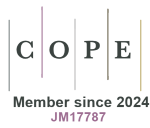X-linked hypophosphatemic rickets: cases series and literature review with a focus on neurosurgical management
DOI:
https://doi.org/10.33393/ao.2023.2513Keywords:
Arnold-Chiari type 1 syndrome, Craniostenosis, Neurosurgical complications, X-linked hypophosphatemic ricketsAbstract
X-linked hypophosphatemic rickets (XLH) is an X-linked dominant disease caused by mutations in the Phosphate-Regulating Endopeptidase X-Linked (PHEX) gene. Due to its rarity and the wide range of clinical manifestations, management of the disease can be challenging due to several associated clinical implications that may arise during follow-up. The neurological complications associated with XLH are the most severe and often less known, which lead to important comorbidities. With the aim of summarizing the available knowledge on neurosurgical intervention in patients with XLH, we present four emblematic cases with disorders requiring neurosurgical evaluation. Relevant diagnostic delay was seen in two of these cases, with another case demonstrating that complications requiring neurosurgery may be present even in patients with few symptoms. The last case stresses the need for care of adult patients who can present with undiagnosed comorbidities. We also carried out a narrative review on neurosurgical interventions in patients with XLH. Through case reports and a review of the literature, focus is placed on the role of the neurosurgeon in the management of patients with XLH. In fact, neurosurgical intervention can often provide stable outcomes for craniosynostosis and clinical improvement for symptoms related to spinal stenosis. Thus, the neurosurgeon can aid in optimizing management of patients with XLH and should be a member of both adult and pediatric multidisciplinary teams. Lastly, additional studies are needed to determine if the early use of burosumab in infants can help to avoid complications in the long term.
References
- Imel EA, Econs MJ. Fibroblast growth factor 23: roles in health and disease. J Am Soc Nephrol. 2005;16(9):2565-2575. https://doi.org/10.1681/ASN.2005050573 PMID:16033853 DOI: https://doi.org/10.1681/ASN.2005050573
- Haffner D, Emma F, Eastwood DM, et al. Clinical practice recommendations for the diagnosis and management of X-linked hypophosphataemia. Nat Rev Nephrol. 2019;15(7):435-455. https://doi.org/10.1038/s41581-019-0152-5 PMID:31068690 DOI: https://doi.org/10.1038/s41581-019-0152-5
- Feng JQ, Clinkenbeard EL, Yuan B, White KE, Drezner MK. Osteocyte regulation of phosphate homeostasis and bone mineralization underlies the pathophysiology of the heritable disorders of rickets and osteomalacia. Bone. 2013;54(2):213-221. https://doi.org/10.1016/j.bone.2013.01.046PMID:23403405 DOI: https://doi.org/10.1016/j.bone.2013.01.046
- Beck-Nielsen SS, Brock-Jacobsen B, Gram J, Brixen K, Jensen TK. Incidence and prevalence of nutritional and hereditary rickets in southern Denmark. Eur J Endocrinol. 2009;160(3):491-497. https://doi.org/10.1530/EJE-08-0818 PMID:19095780 DOI: https://doi.org/10.1530/EJE-08-0818
- Endo I, Fukumoto S, Ozono K, et al. Nationwide survey of fibroblast growth factor 23 (FGF23)-related hypophosphatemic diseases in Japan: prevalence, biochemical data and treatment. Endocr J. 2015;62(9):811-816. https://doi.org/10.1507/endocrj.EJ15-0275PMID:26135520 DOI: https://doi.org/10.1507/endocrj.EJ15-0275
- Kocaoglu M, Bilen FE, Sen C, Eralp L, Balci HI. Combined technique for the correction of lower-limb deformities resulting from metabolic bone disease. J Bone Joint Surg Br. 2011;93(1):52-56. https://doi.org/10.1302/0301-620X.93B1.24788 PMID:21196543 DOI: https://doi.org/10.1302/0301-620X.93B1.24788
- Matsubara H, Tsuchiya H, Kabata T, Sakurakichi K, Watanabe K, Tomita K. Deformity correction for vitamin D-resistant hypophosphatemic rickets of adults. Arch Orthop Trauma Surg. 2008;128(10):1137-1143. https://doi.org/10.1007/s00402-007-0548-8 PMID:18157541 DOI: https://doi.org/10.1007/s00402-007-0548-8
- Sharkey MS, Grunseich K, Carpenter TO. Contemporary medical and surgical management of X-linked hypophosphatemic rickets. J Am Acad Orthop Surg. 2015;23(7):433-442. https://doi.org/10.5435/JAAOS-D-14-00082 PMID:26040953 DOI: https://doi.org/10.5435/JAAOS-D-14-00082
- De Cicco A, Toro G, Grandone A, et al. X-linked hypophosphatemic rickets. What the orthopedic surgeon needs to know. Int. J Bone Fragility Rare Common Disord. 2021;1(2):59-66. https://doi.org/10.57582/IJBF.210102.059 DOI: https://doi.org/10.57582/IJBF.210102.059
- Carpenter TO, Imel EA, Ruppe MD, et al. Randomized trial of the anti-FGF23 antibody KRN23 in X-linked hypophosphatemia. J Clin Invest. 2014;124(4):1587-1597. https://doi.org/10.1172/JCI72829 PMID:24569459 DOI: https://doi.org/10.1172/JCI72829
- Carpenter TO, Whyte MP, Imel EA, et al. Burosumab therapy in children with X-linked hypophosphatemia. N Engl J Med. 2018;378(21):1987-1998. https://doi.org/10.1056/NEJMoa1714641 PMID:29791829 DOI: https://doi.org/10.1056/NEJMoa1714641
- Insogna KL, Briot K, Imel EA, et al; AXLES 1 Investigators. A randomized, double-blind, placebo-controlled, phase 3 trial evaluating the efficacy of burosumab, an anti-FGF23 antibody, in adults with X-linked hypophosphatemia: week 24 primary analysis. J Bone Miner Res. 2018;33(8):1383-1393. https://doi.org/10.1002/jbmr.3475 PMID:29947083 DOI: https://doi.org/10.1002/jbmr.3475
- Padidela R, Whyte MP, Glorieux FH, et al. Patient-reported outcomes from a randomized, active-controlled, open-label, phase 3 trial of burosumab versus conventional therapy in children with X-Linked hypophosphatemia. Calcif Tissue Int. 2021;108(5):622-633. https://doi.org/10.1007/s00223-020-00797-x PMID:33484279 DOI: https://doi.org/10.1007/s00223-020-00797-x
- Caldemeyer KS, Boaz JC, Wappner RS, Moran CC, Smith RR, Quets JP. Chiari I malformation: association with hypophosphatemic rickets and MR imaging appearance. Radiology. 1995;195(3):733-738. https://doi.org/10.1148/radiology.195.3.7754003PMID:7754003 DOI: https://doi.org/10.1148/radiology.195.3.7754003
- Rothenbuhler A, Fadel N, Debza Y, et al. High incidence of cranial synostosis and Chiari I malformation in children with X-linked hypophosphatemic rickets (XLHR). J Bone Miner Res. 2019;34(3):490-496. https://doi.org/10.1002/jbmr.3614 PMID:30352126 DOI: https://doi.org/10.1002/jbmr.3614
- Watts L, Wordsworth P. Chiari malformation, syringomyelia and bulbar palsy in X linked hypophosphataemia. BMJ Case Rep. 2015;2015. https://doi.org/10.1136/bcr-2015-211961 DOI: https://doi.org/10.1136/bcr-2015-211961
- Kuether TA, Piatt JH. Chiari malformation associated with vitamin D-resistant rickets: case report. Neurosurgery. 1998;42(5):1168-1171. https://doi.org/10.1097/00006123-199805000-00134PMID:9588565 DOI: https://doi.org/10.1097/00006123-199805000-00134
- Vega RA, Opalak C, Harshbarger RJ, et al. Hypophosphatemic rickets and craniosynostosis: a multicenter case series. J Neurosurg Pediatr. 2016;17(6):694-700. https://doi.org/10.3171/2015.10.PEDS15273 PMID:26824597 DOI: https://doi.org/10.3171/2015.10.PEDS15273
- Carlsen NL, Krasilnikoff PA, Eiken M. Premature cranial synostosis in X-linked hypophosphatemic rickets: possible precipitation by 1-alpha-OH-cholecalciferol intoxication. Acta Paediatr Scand. 1984;73(1):149-154. https://doi.org/10.1111/j.1651-2227.1984.tb09917.xPMID:6538374 DOI: https://doi.org/10.1111/j.1651-2227.1984.tb09917.x
- Jaszczuk P, Rogers GF, Guzman R, Proctor MR. X-linked hypophosphatemic rickets and sagittal craniosynostosis: three patients requiring operative cranial expansion: case series and literature review. Childs Nerv Syst. 2016;32(5):887-891. https://doi.org/10.1007/s00381-015-2934-9 PMID:26510652 DOI: https://doi.org/10.1007/s00381-015-2934-9
- Hamdy NAT, Harvengt P, Usardi A. X-linked hypophosphatemia: the medical expert’s challenges and the patient’s concerns on their journey with the disease. Arch Pediatr. 2021;28(7):612-618. https://doi.org/10.1016/j.arcped.2021.09.005 PMID:34593293 DOI: https://doi.org/10.1016/j.arcped.2021.09.005
- Baroncelli GI, Mora S. X-linked hypophosphatemic rickets: multisystemic disorder in children requiring multidisciplinary management. Front Endocrinol (Lausanne). 2021;12:688309. https://doi.org/10.3389/fendo.2021.688309 PMID:34421819 DOI: https://doi.org/10.3389/fendo.2021.688309
- Giannini S, Bianchi ML, Rendina D, Massoletti P, Lazzerini D, Brandi ML. Burden of disease and clinical targets in adult patients with X-linked hypophosphatemia. A comprehensive review. Osteoporos Int. 2021;32(10):1937-1949. https://doi.org/10.1007/s00198-021-05997-1PMID:34009447 DOI: https://doi.org/10.1007/s00198-021-05997-1
- Laurent MR, De Schepper J, Trouet D, et al. Consensus recommendations for the diagnosis and management of X-linked hypophosphatemia in Belgium. Front Endocrinol (Lausanne). 2021;12: 641543. https://doi.org/10.3389/fendo.2021.641543 PMID: 33815294 DOI: https://doi.org/10.3389/fendo.2021.641543
- Raimann A, Mindler GT, Kocijan R, et al. Multidisciplinary patient care in X-linked hypophosphatemic rickets: one challenge, many perspectives. Wien Med Wochenschr. 2020;170(5-6):116-123. https://doi.org/10.1007/s10354-019-00732-2 PMID:31993875 DOI: https://doi.org/10.1007/s10354-019-00732-2
- Andropoulos BD. Gregory's pediatric anesthesia. 5th ed. In: Gregory GA, Andropoulos DB, ed. Blackwell Publishing Ltd; 2012. Accessed October 14, 2022. https://onlinelibrary.wiley.com/doi/pdf/10.1002/9781444345186.app2 DOI: https://doi.org/10.1002/9781444345186
- Yamamoto Y, Onofrio BM. Spinal canal stenosis with hypophosphatemic vitamin D-resistant rickets: case report. Neurosurgery. 1994;35(3):512-514. https://doi.org/10.1227/00006123-199409000-00022 PMID:7800144 DOI: https://doi.org/10.1097/00006123-199409000-00022
- Soehle M, Casey AT. Cervical spinal cord compression attributable to a calcified intervertebral disc in a patient with X-linked hypophosphatemic rickets: case report and review of the literature. Neurosurgery. 2002;51(1):239-242. https://doi.org/10.1097/00006123-200207000-00038PMID:12182425 DOI: https://doi.org/10.1097/00006123-200207000-00038
- Riccio AR, Entezami P, Giuffrida A, Dowling J, Forrest G, German JW. Minimally invasive surgical management of thoracic ossification of the ligamentum flavum associated with X-linked hypophosphatemia. World Neurosurg. 2016;94:580.e5-580.e10. https://doi.org/10.1016/j.wneu.2016.07.076 PMID:27481600 DOI: https://doi.org/10.1016/j.wneu.2016.07.076
- Dunlop DJ, Stirling AJ. Thoracic spinal cord compression caused by hypophosphataemic rickets: a case report and review of the world literature. Eur Spine J. 1996;5(4):272-274. https://doi.org/10.1007/BF00301332 PMID:8886741 DOI: https://doi.org/10.1007/BF00301332
- Murthy AS. X-linked hypophosphatemic rickets and craniosynostosis. J Craniofac Surg. 2009;20(2):439-442. https://doi.org/10.1097/SCS.0b013e31819b9868 PMID:19242361 DOI: https://doi.org/10.1097/SCS.0b013e31819b9868
- Migliarino V, Magnolato A, Barbi E. Twin girls with hypophosphataemic rickets and papilloedema. Arch Dis Child Educ Pract Ed. 2022;107(2):124-126. PMID:33127660









